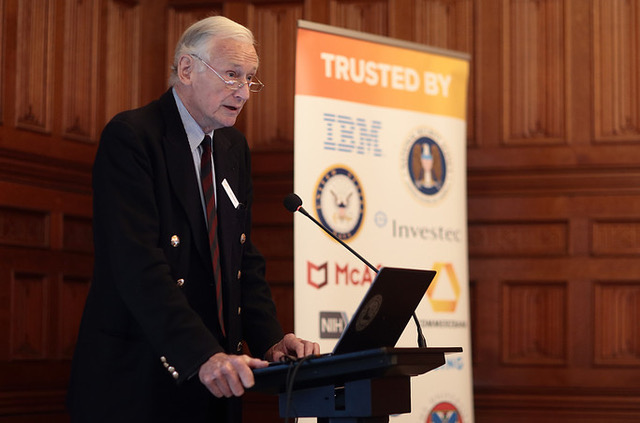Bridgeworks CEO, David Trossell speaks to TU Automotive about how the automotive market is speeding towards being technology future proof.
![]()
May 28, 2020
The connected, 5G future has many promises that come with big demands.
As the next generation in mobile connectivity it offers the capability to process terabytes of data per hour, enable faster over-the-air updates and some proponents of the technology say they can achieve this with near-zero latency. The question though is: Can they?
In its 2019 Strategy & Digital Auto Report, Time to get real: opportunities in a transforming market, PwC claims: “5G will drive not only new connected services, but also foster shift towards cloud-based vehicle architecture.” In its view, the implications will be that “different vehicle electronics architectures will coexist but with a clear trend toward in-vehicle centralization”.
Smartphones-on-wheels
The report says cars will become smartphones-on-wheels with “software design re-use and software-based innovation; lower complexity and volumes of physical components (e.g. ECUs); optimization of power consumption across vehicle, cloud, and potentially other vehicles”. These connected and autonomous vehicles (CAVs) will also have increased longevity as they will also have the ability to physically upgrade.
Deloitte’s automotive manager, Niranjan Thiyagarajan adds his view on the promises that 5G brings with it: “5G has the potential to operate up to 100 times faster than current 4G speeds, enabling more complex and data heavy services. In automotive, some technologies, like over-the-air, may be limited to use where the car is stationary for safety reasons. However, video and content streaming for passengers and, in the case of autonomous vehicles, sensor, LiDAR and camera data services are examples that can be offered while the vehicle is in motion.”
Speed versus latency
Speaking about the reported claims that 5G will offer near-zero latency, Thiyagarajan comments: “Like any technology, 5G will still have latency albeit improved from 4G speeds. The challenge remains whether it will be sufficient on its own to support some of the more safety-critical services, such as enabling an autonomous vehicle to transfer location data to the cloud for further processing.”
However, David Trossell, CEO and CTO of WAN Acceleration solutions providers, reveals that near-zero latency isn’t possible. He thinks that 5G has great potential, but he feels there needs to be more honesty about latency. “To understand the latency in a 5G network, we need to break it down into a number of elements.” He says they include, firstly, understanding the way in which messages are “created, encoded and sent over a network, which in itself can have an impact”.
While 5G can have distinct advantage in this process, the difference is only in sub-milliseconds. He explains: “It is true that using high frequency signals will allow us to move more data in a shorter time frame giving the impression of reduced application latency but the key factor in latency is what happens to the signal when the device hits the tower or a different 5G network.”
“Most 5G networks use what’s called non-standalone or NSA mode connection at present and this means the radio connection from your device to the tower is 5G, but from the tower to the rest of the “core” network is still 4G! Then you have the backhaul connection to computing or data gathering facility. This creates more latency. I expect there are plans to provide local computing or cloud facilities in base stations to overcome this for low latency critical applications.”
Looking beyond 5G
Thiyagarajan comments that some vehicle manufacturers are also “looking further into the future, beyond 5G, and considering technology such as satellite-based communication”. This is because in the long-term CAV technology can’t be restricted to just one solution. It will require many solutions, including LiDAR and camera-based ones.
So, how are the latest electronic vehicles architectures answering the call? He finds that they will require a significant amount of computational power to “drive complex electric and autonomous vehicles. As a result, a huge rise in 48V electrical architecture has been developed to support it”. Yet, he believes that, for the moment, the business case for in-vehicle connected services remains unclear.
Paying infrastructure updates
There are also questions being posed about who would be happy to pay for the any infrastructure updates and any related expenses. “Car manufacturers may not be prepared to bear this cost, whilst simultaneously requesting mobile network operators reduce prices per GB of data,” he claims.
However, he sees a time when people will see connected service packages such as in-vehicle heart rate monitors and driver drowsiness detections, as part of a pack of services to ensure the wellbeing of everyone in the vehicle. Thiyagarajan concludes that “this becomes even more relevant in an autonomous vehicle where passengers may spend more time in transit”.
Backwards-compatibility
Like every computer that’s ever been designed, there will also need to be a case for the technology to be backwards-compatible to ensure that new and legacy tech can continue to interoperate for a least a certain period of time to ensure vehicle safety.
This isn’t just a case of how or whether a CAV can receive software updates from any service provider, because the technology will improve as time goes on. Yet, there will be systems or vehicles on the road with legacy software, hardware and infrastructure, with which newer CAVs will have to interact – in the same way that banking systems often have to integrate with legacy systems to achieve regulatory compliance and in many cases to prevent fraud. Similarly, for safety’s sake, quality of service, quality of experience and reliability, CAV future-proofing has to start today, not in a decade’s time.




